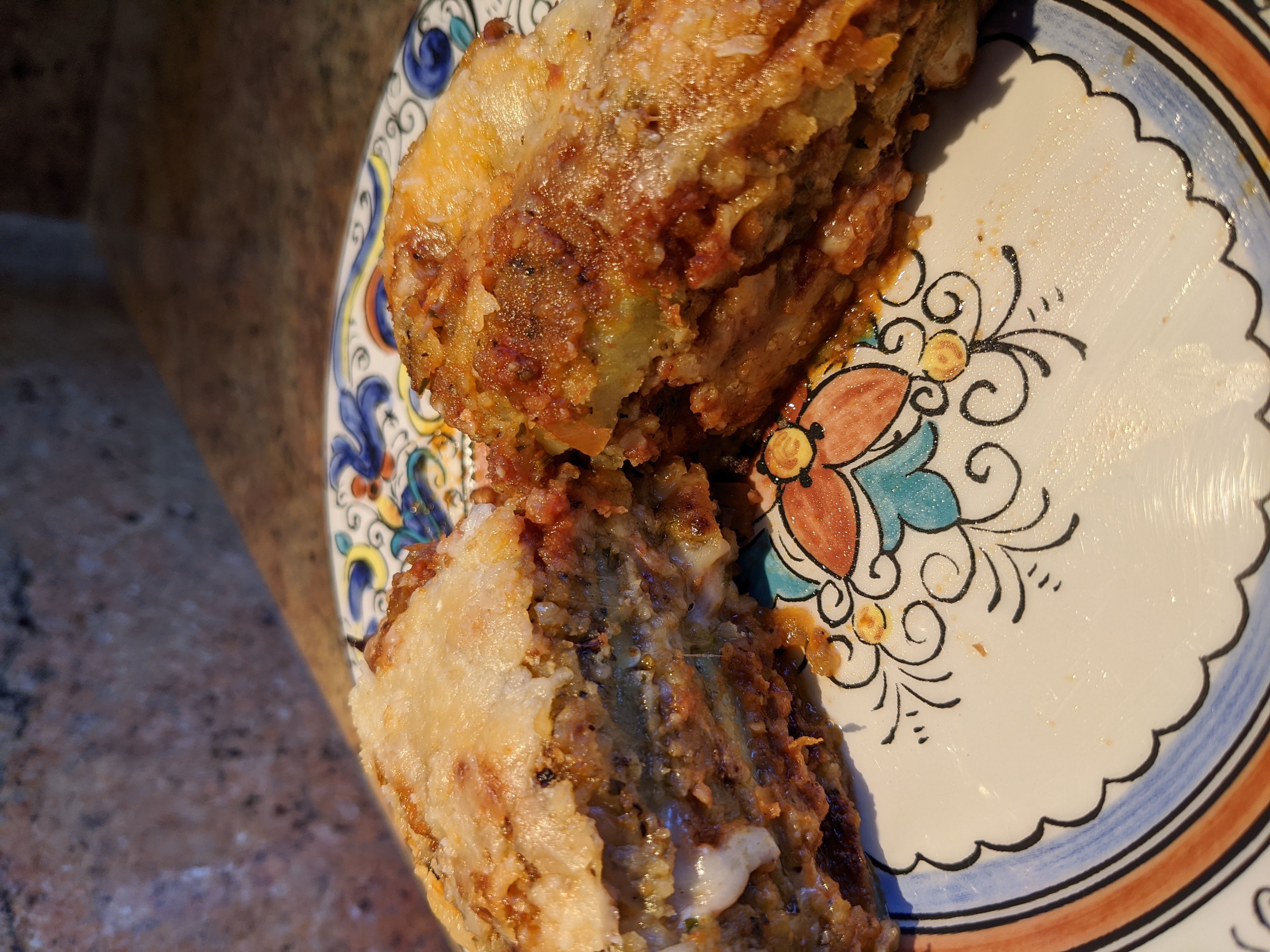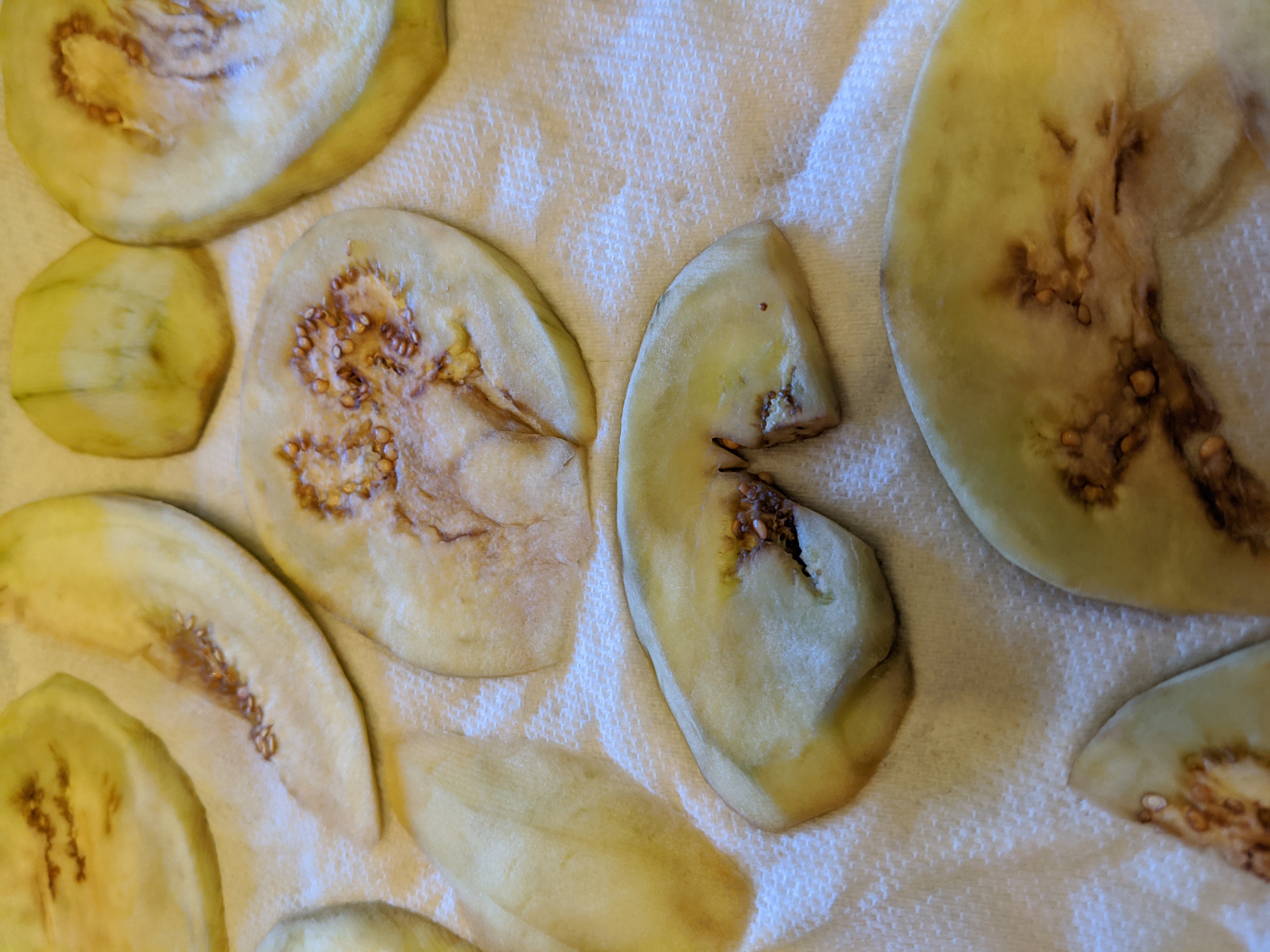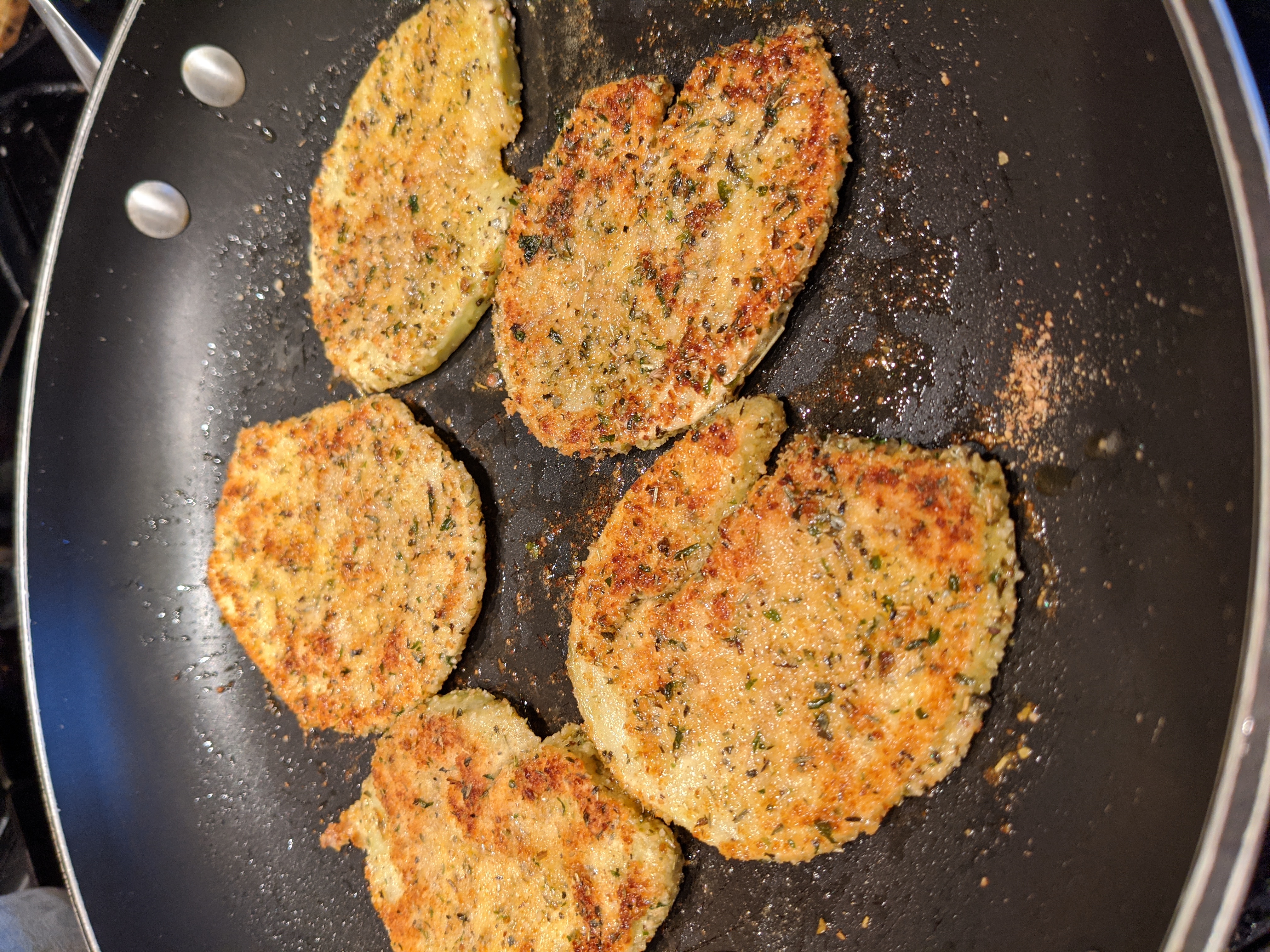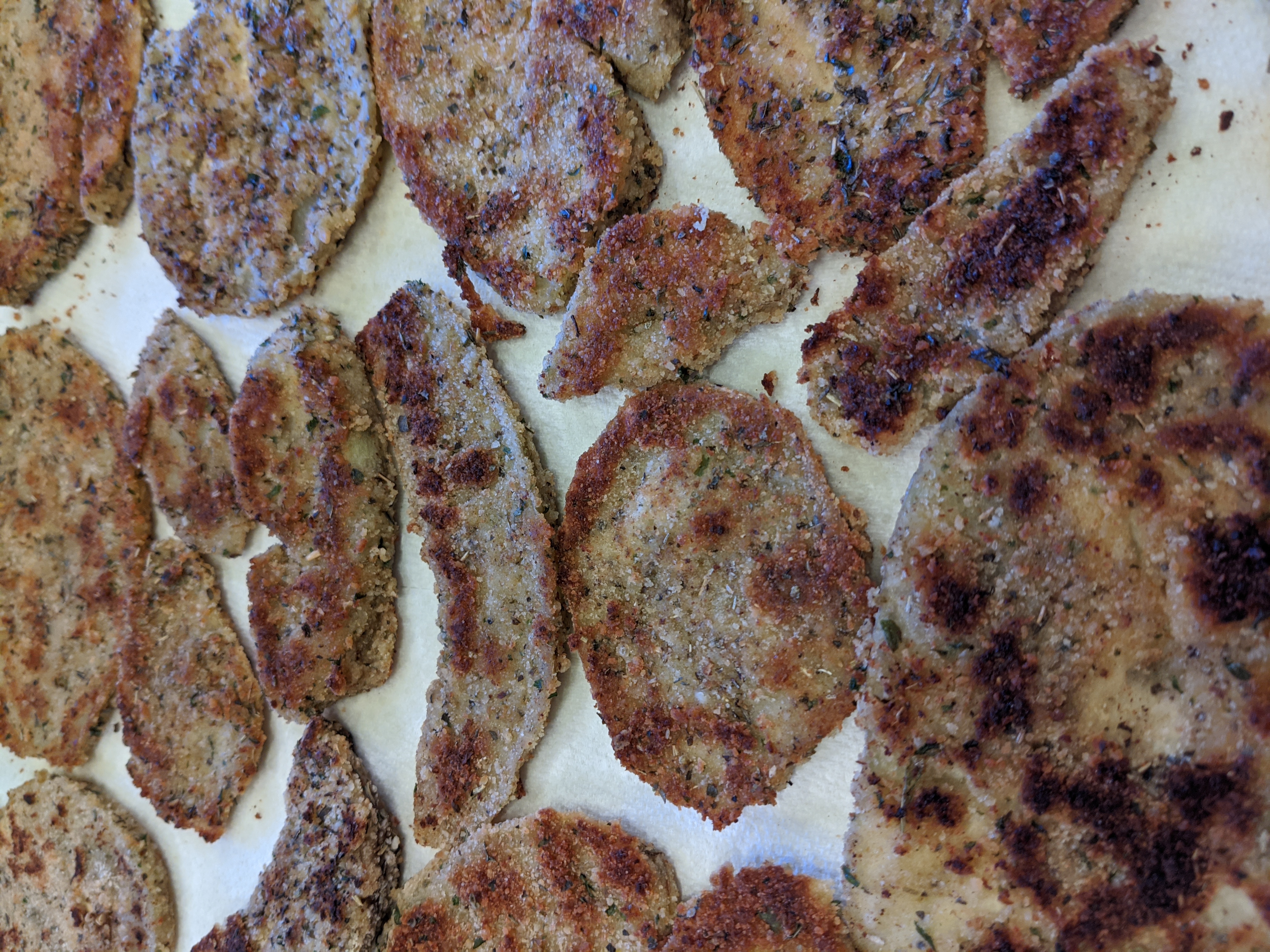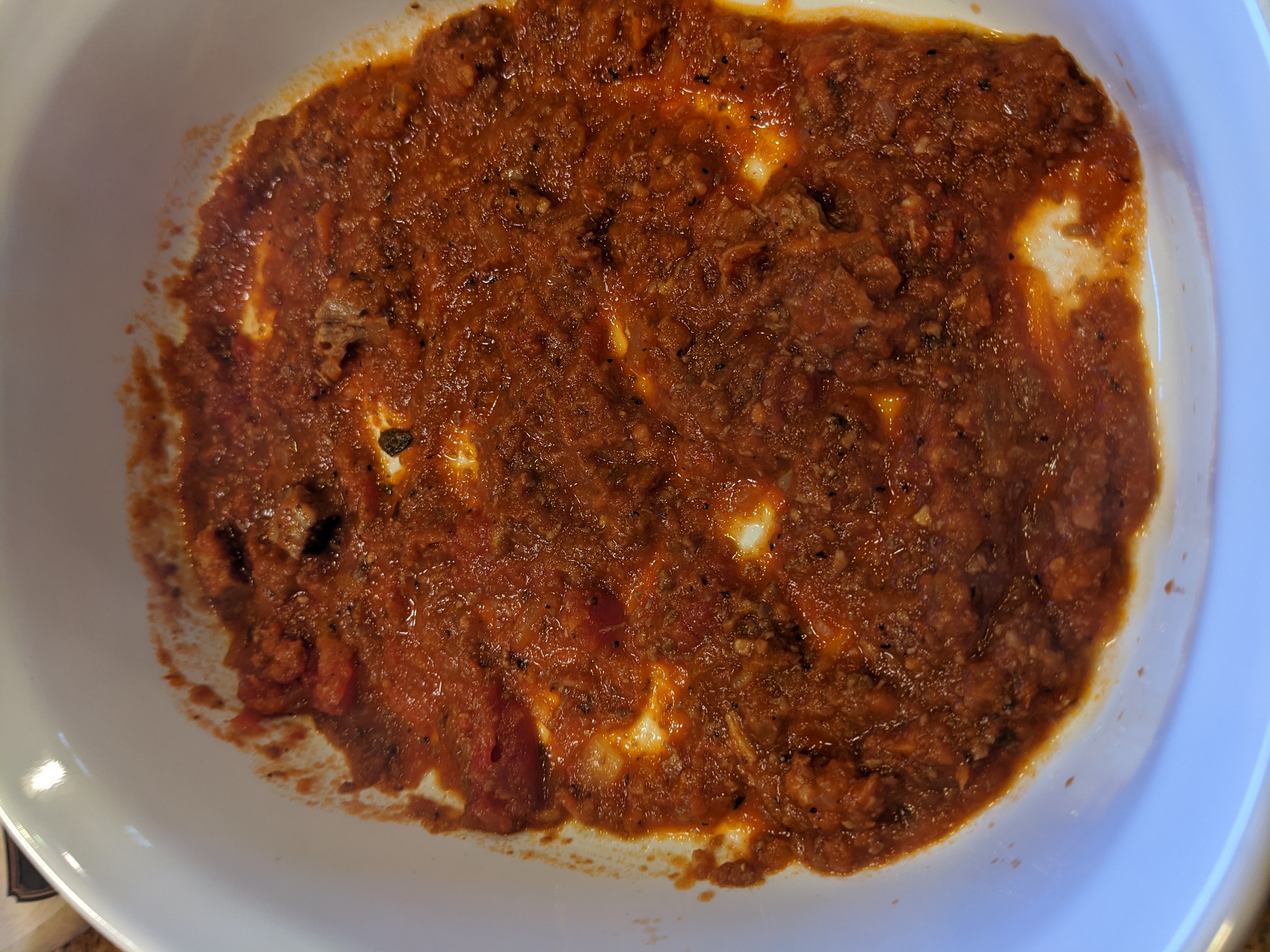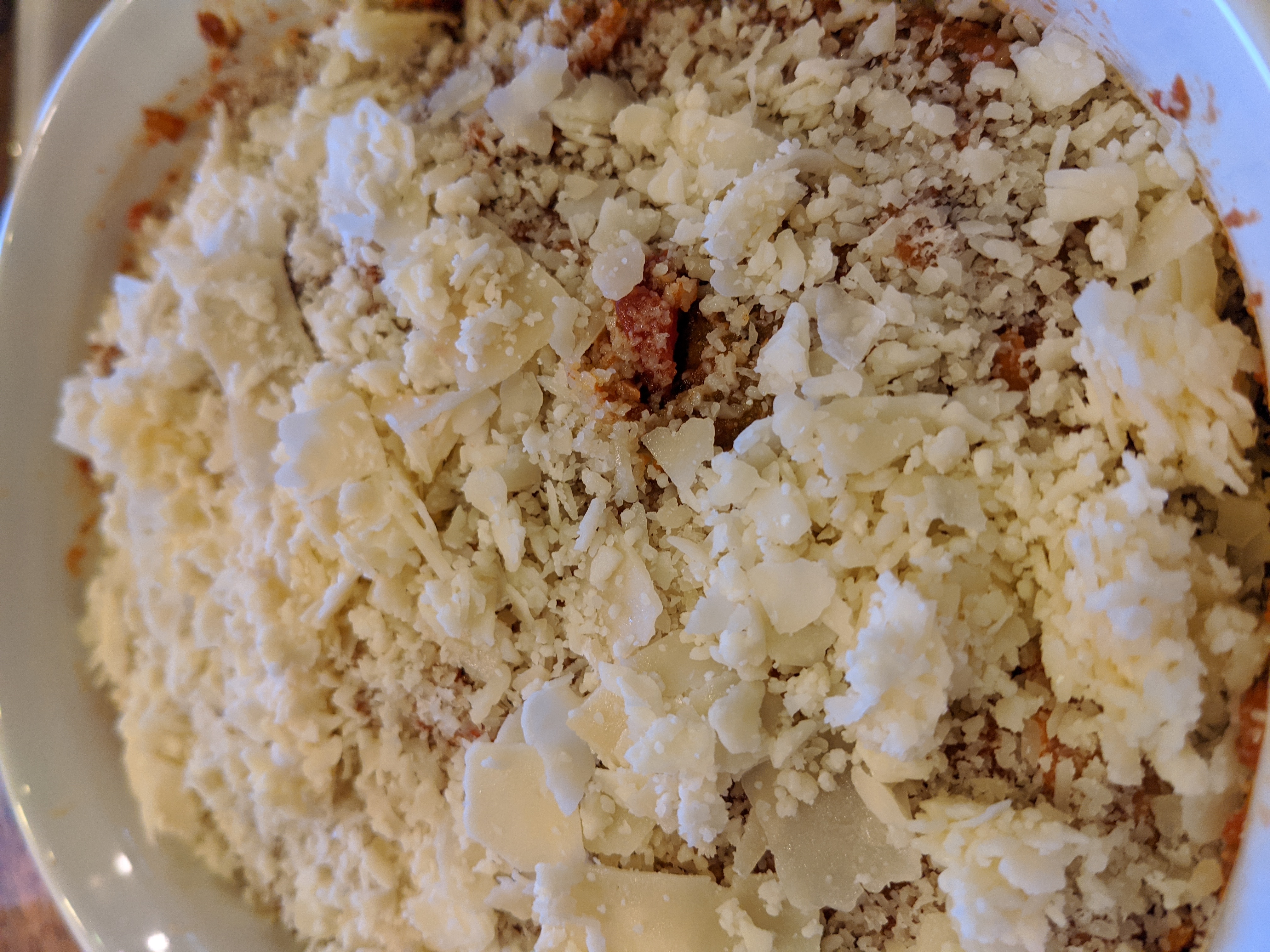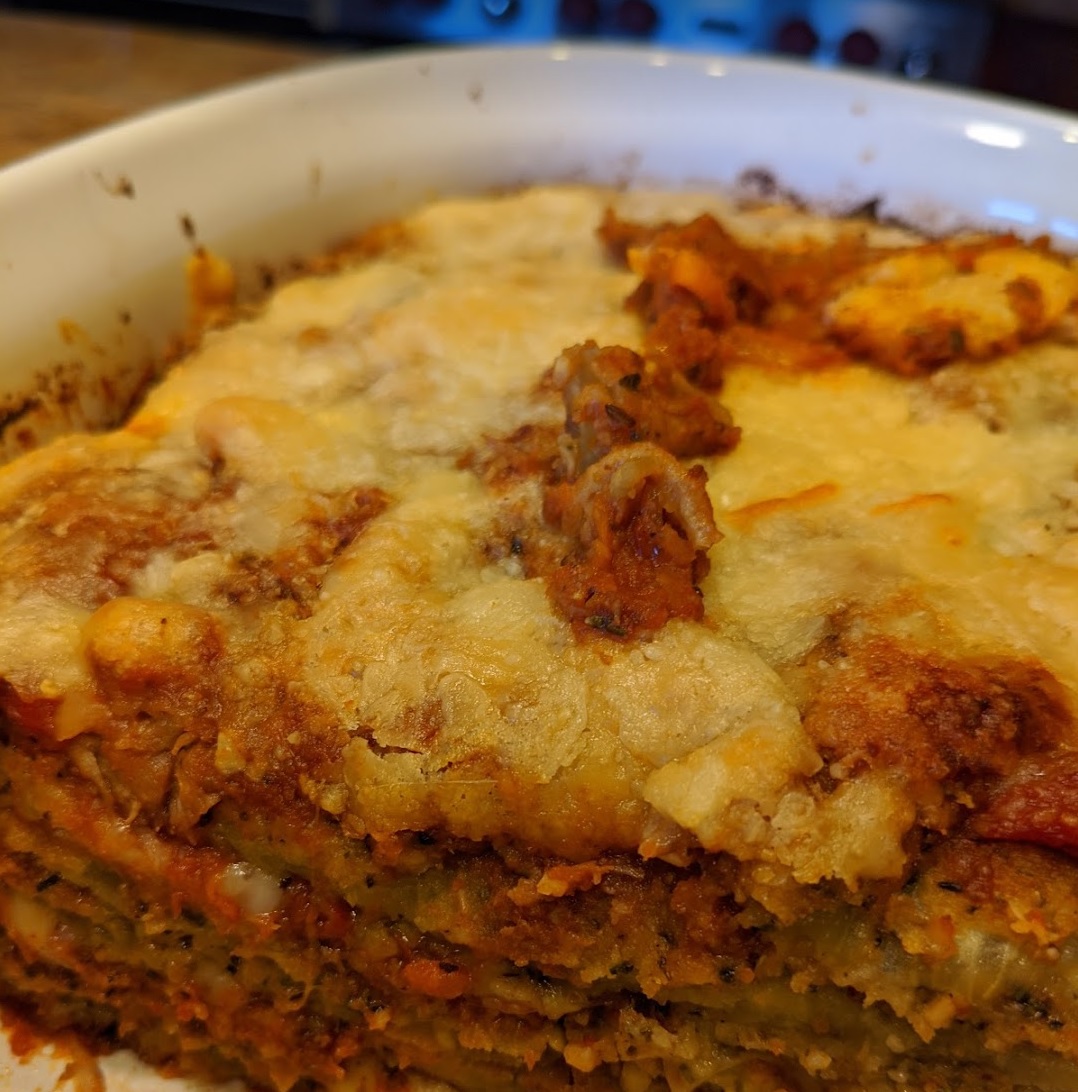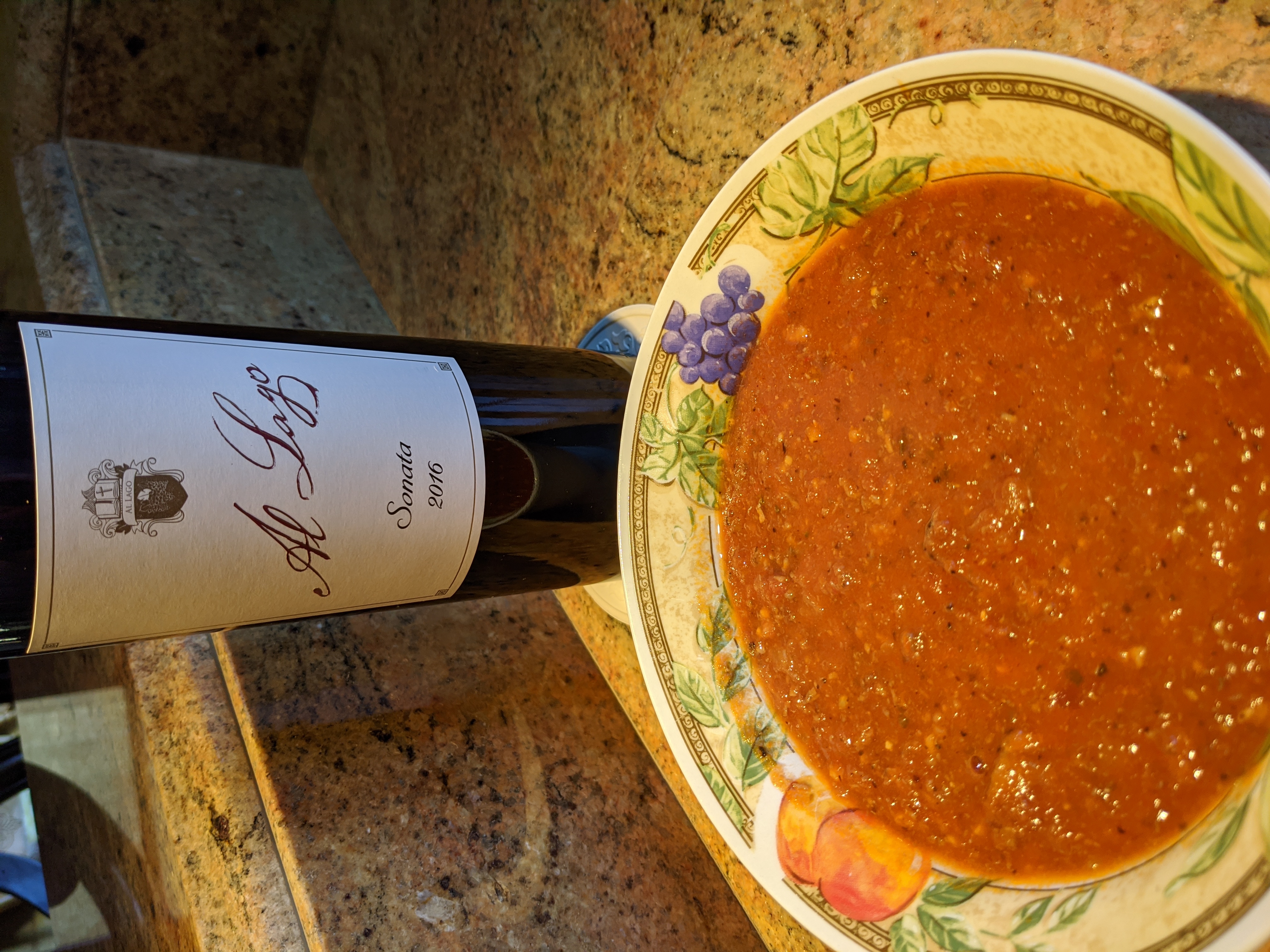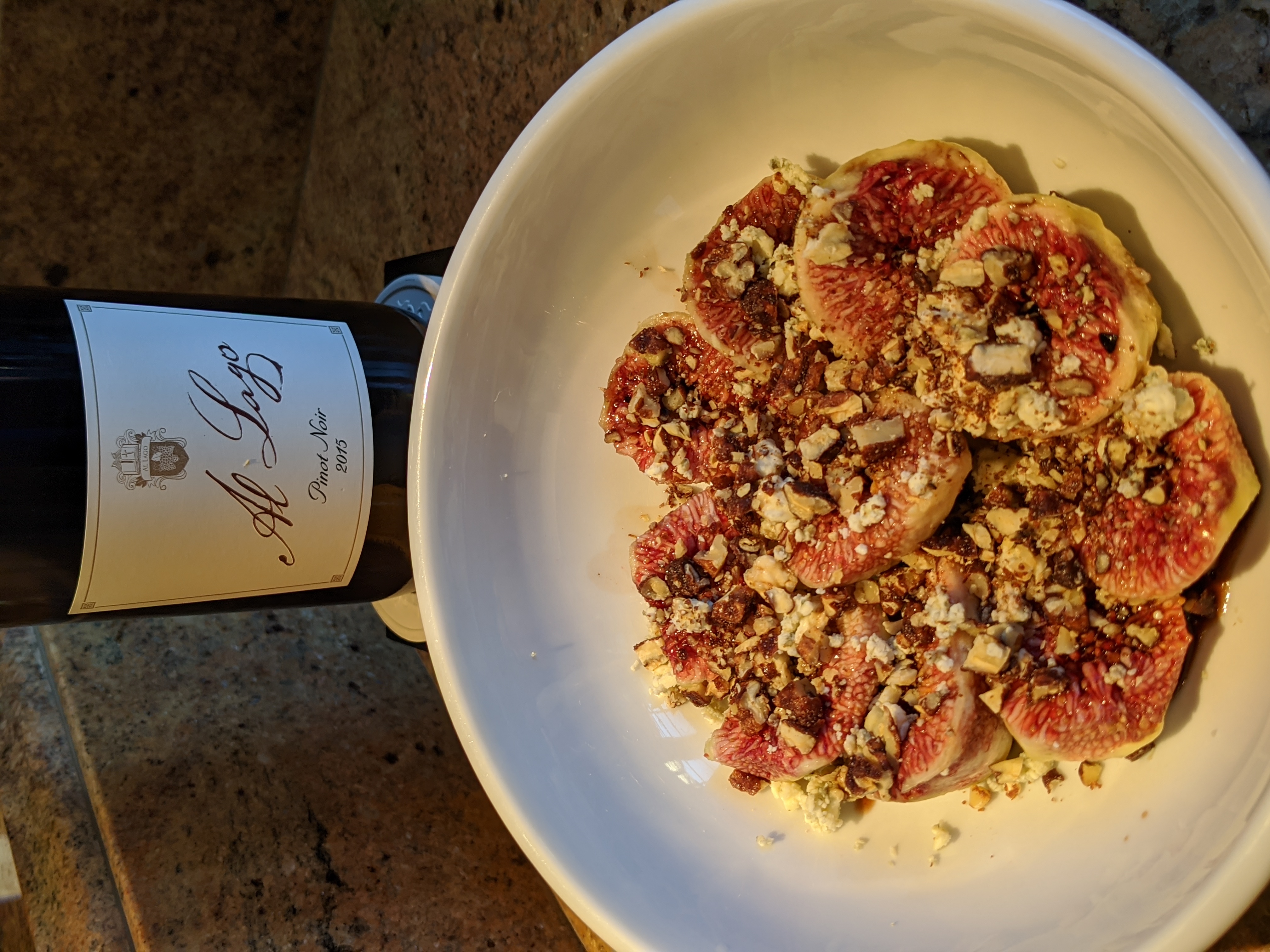Eggplant Parmigiana / Parmigiana di Melanzane
Description
Eggplant Parmigiana, Parmigiana di Melanzane in Italian, is one of the classic preparations of southern Italy. It is a preparation associated with the cooking of Naples, but it is popular in the Campanian countryside and Calabria and Sicily too. There are several theories about the origin of Eggplant Parmigiana. The most obvious is that the name of the dish derives from parmigiano cheese, the predominate cheese used in the dish. Many have voiced suspicion for this explanation because parmigiano is not native to Naples or other regions of southern Italy where Eggplant Parmigiana is found. Instead, most of us believe that the name of the dish became altered when the Sicilian word “parmiciana” (dialect for “shingle”) was changed to “parmigiana”, in reference to the famous cheese from Parma that is used in this dish. “Parmicana” referred to the way the fried slices of eggplant are arranged in the baking dish–overlapping in the same way shingles are arranged on a rooftop. Whatever the history of the dish and its distinctive name, it’s one of our favorites from the eggplant we grow in our garden. We know you will love it!
At a Glance
Equipment
It is important to have a large, non-stick / coated skillet as well as a 2-½ quart, oven-safe dish (like CorningWare) for the preparation of this terrific, Italian classic!
Ingredients
2 Eggplants, peeled and sliced into about ⅛-inch slices
3 Eggs, beaten until frothy
Salt
⅓ cup of Olive Oil
¾ cup of All-Purpose Flour
¾ cup of Italian, Herb-Breadcrumbs
2 tablespoons McCormick® Grill Mates® Montreal Steak Seasoning
3 tablespoons of dried, Italian Seasoning
3-½ cups of Italian Red Meat Sauce and you can easily access that recipe by clicking on that title. (Note: We like to use a meat sauce with this to make it into a full meal. If you prefer, you can also use a Marinara or other red sauce -- either store bought or homemade.)
6 ounces of shredded Italian, Four-Cheese blend (we use a blend of Provolone, Asiago, Romano, and Parmesan cheese)
6 ounces of Parmesan Cheese, grated
Directions
Place the sliced eggplant in single layers on to colanders or strainers and sprinkle them with salt. Let them sit for an hour. Turn the eggplant over (again in a single layer) and sprinkle them with salt again and let them sit for another hour. This will allow for the extra liquids to drain out from the eggplant.
After the second hour, rinse the eggplant well to remove the salt, and then “pat” them dry with a paper towel -- pressing / squeezing out the excess liquid. Place the eggplant slices on to a plate. Then, create your own “dredge station”. Start by placing the flour on a large plate and whisk the McCormick® Grill Mates® Montreal Steak Seasoning into the flour. Next place a large bowl with the frothy beaten eggs next to the plate with the flour. Then on another plate on the other side of the eggs, place the Italian herb bread crumbs and whisk in the dried Italian seasoning to the bread crumbs. This is your “dredge station”. Generally, it is best to prepare all of the eggplant at once through the “dredge station” and then cook them afterward. Move the eggplant to the far side of the flour and begin to dredge each slice of eggplant by first coating the eggplant with the flour, then putting it into the egg, and then coating it with the breadcrumbs. Place the coated eggplant on a plate and continue the dredging process until all of the eggplant slices are coated. If necessary, add more of the flour, egg, or breadcrumbs as needed.
In a 3-quart saucepan, begin to warm the red meat sauce (or whatever red sauce you plan to use for the dish) over a medium heat; do not let it burn on the bottom.
Once the eggplant slices are all coated, heat a cast-iron skillet on a medium-high heat and add one tablespoon of the extra-virgin olive oil. The eggplant will now be cooked in batches. It is important that the oil is hot enough to cook the eggplant to a nice crisp (but not burned) texture; if the oil is not hot enough, the eggplant will absorb the oil and the eggplant parmesan will ultimately be soggy – saturated with the oil, which is not good. The temperature of the pan is very important during this process. As you cook the eggplant on each side, about 3 minutes per side, make sure once you take the eggplant out when it appears nice, brown, and dry – not oily. If it appears too brown, reduce the heat or the amount of cooking time; if it appears too oily, increase the heat and make sure that you put the eggplant in only when the oil is hot – otherwise, it will just absorb the oil.
Place the cooked eggplant slices on a baking sheet lined with a paper towel in a single layer.
Using a paper towel, carefully clean the skillet between each batch. Add another tablespoon of olive oil, bring it to a medium-high heat, and continue with the next batches until the eggplant slices are all cooked.
Preheat the oven to 400 degrees F, and while it is heating, assemble the dish. In a 2- ½ quart oven-safe dish (we use a CorningWare dish). Remove the saucepan with the red sauce, and place that on the counter next to the baking sheet with the eggplant slices. Then, place your cheeses next to the red sauce. Start the layering of the eggplant parmesan by adding your sauce (about ½ cup) to the bottom of your dish first.
Then begin to layer the eggplant on top of the sauce. Add more sauce and a layer of cheese. Continue with this layering process until you end with a final layer of eggplant, sauce and cheese on the top. It is important that you do not add too much cheese or sauce. This allows the texture and structure of the eggplant parmesan to hold up well when it is cooked. Too much cheese or too much sauce can make the eggplant parmesan sloppy and you want a nice structure.
Bake the eggplant parmesan at 400 degrees F for about 30 minutes, until the sauce is bubbling, and the cheese is golden brown on top. When it is removed from the oven, let the eggplant parmesan set for about 10-20 minutes; then serve it. Additional sauce, cheese and even fresh basil can be added to garnish.
Serving Suggestions:
We store the leftovers in the refrigerator and enjoy them for several days. This can be a meal in itself, especially if you use the meat sauce (as we recommend here), or it can be a nice side dish. Either way it is wonderful with a nice salad and will pair very well with many of our wines. Cheers!!


